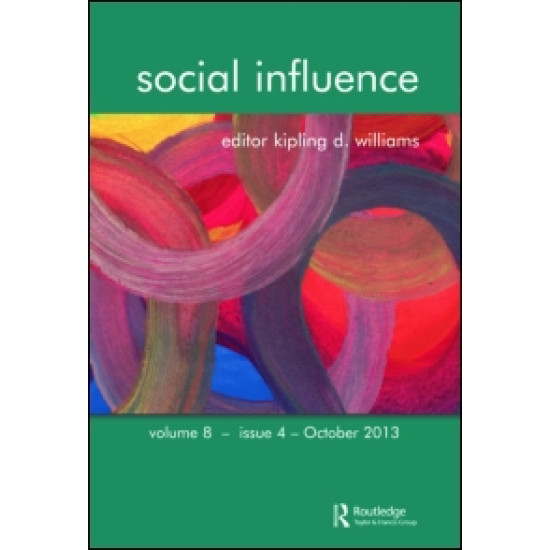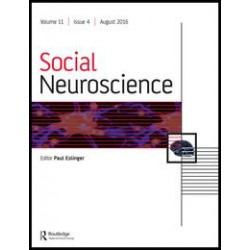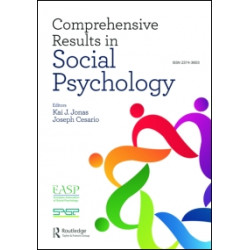
Social Influence is a journal that provides an integrated focus for research into this important, dynamic, and multi-disciplinary field. Topics covered include: conformity, norms, social influence tactics such as norm of reciprocity, authority, scarcity, interpersonal influence, persuasion, power, advertising, mass media effects, political persuasion, propaganda, comparative influence, compliance, minority influence, influence in groups, cultic influence, social movements, social contagions, rumors, resistance to influence, influence across cultures, and the history of influence research. This journal is of interest to social psychologists, political psychologists, consumer psychologists, organizational psychologists, sociologists, communication researchers, and anyone interested in any aspect of social influence.
The journal publishes experimental research investigating aspects of social influence, although we will consider meta-analyses. Correlational studies and surveys are welcome but cannot be the sole basis for the evidence presented in the article. Although not a requirement, we strongly encourage authors to use behavioral dependent measures (e.g., petition signing, donations, voting, helping). The research submitted should advance theory and/or application.
Social Influence desires short, reader-friendly manuscripts limited to 5000 words; authors should be aware of the cross-disciplinary nature of the journal and avoid abbreviations, acronyms, and jargon.
All research articles in this journal, including those in special issues, have undergone rigorous peer review, based on initial editor screening and refereeing by at least two independent, expert referees. All peer review is single blind and submissions may be made online via ScholarOne Manuscripts.
Disclaimer
Taylor & Francis makes every effort to ensure the accuracy of all the information (the "Content") contained in its publications. However, Taylor & Francis and its agents and licensors make no representations or warranties whatsoever as to the accuracy, completeness or suitability for any purpose of the Content and disclaim all such representations and warranties whether expressed or implied to the maximum extent permitted by law. Any views expressed in this publication are the views of the authors and are not the views of Taylor & Francis.









